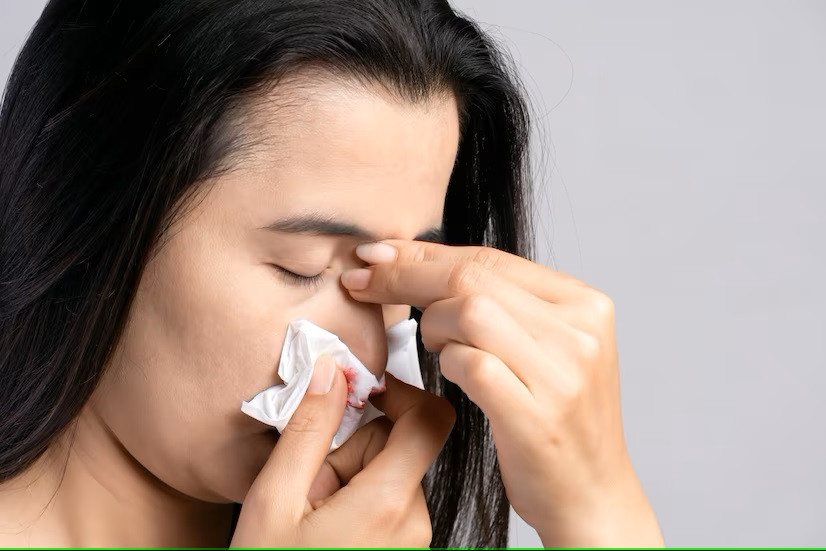Nosebleeds occur when blood vessels in the nose rupture, leading to bleeding. They can be triggered by dry air, excessive nose picking, trauma or injury, allergies, sinus infections, changes in air pressure, or certain medications.
While nosebleeds are usually harmless, they can be distressing and uncomfortable. Knowing the correct first aid steps can help manage nosebleeds effectively.
First Aid Steps for Nosebleeds
A nosebleed, medically known as epistaxis, involves blood flowing from one or both nostrils. It's important to remain calm when a nosebleed happens. Follow these first aid steps:
Sit Upright
The first thing to do when you notice blood from your nose is to sit upright. This position helps reduce pressure on the blood vessels in the nose, aiding in stopping the bleeding.
Avoid lying down or tilting your head backward, as this can cause blood to flow into your throat, which may lead to coughing or vomiting.
Tilt Your Head Forward
Contrary to popular belief, tilting your head back during a nosebleed is not recommended. Doing so allows blood to flow to the back of the throat, which can be swallowed. Instead, slightly tilt your head forward, allowing the blood to flow out of your nose naturally.
Pinch Your Nose Gently
Next, gently pinch your nostrils just below the bridge of your nose using your thumb and index finger.
This pressure helps stop the bleeding in the ruptured vessels. Maintain this pressure for 10-15 minutes continuously without releasing too soon to ensure the bleeding stops completely. In the meantime, breathe through your mouth.
Apply a Cold Compress
Using a cold compress can help constrict blood vessels and speed up the process of stopping the bleeding. However, avoid applying ice directly to the skin without protection, as it can cause irritation.
Wrap the ice in a towel or clean cloth and place it on the nose for a few minutes until the bleeding subsides.
Avoid Blowing Your Nose
During or shortly after a nosebleed, avoid blowing your nose hard or picking it to prevent triggering another nosebleed. It's best to wait several hours after the bleeding has stopped before engaging in any activity involving the nose.
When Will Nosebleed Considered Serious?
Though most nosebleeds stop within minutes and are harmless, some may indicate more serious health issues.
Here are some signs to watch for that could signal a more serious condition:
- Nosebleeds that last longer than 20 minutes and are difficult to stop
- Frequent, recurring nosebleeds
- Nosebleeds related to medical conditions such as hemophilia, leukemia (blood cancer), or liver disease
If you experience persistent or concerning nosebleeds, consult a doctor for further evaluation.
Have more questions about nosebleeds? You can use the Ai Care health consultation service by downloading the app from the App Store or Play Store.
Want to learn more about other illnesses? Click here!
- dr Nadia Opmalina
Better Health. Nosebleeds. Available from: https://www.betterhealth.vic.gov.au/health/conditionsandtreatments/nosebleeds
Medline Plus (2023). Nosebleed. Available from: https://medlineplus.gov/ency/article/003106.htm
Cleveland Clinic (2023). Nosebleed (Epistaxis). Available from: https://my.clevelandclinic.org/health/diseases/13464-nosebleed-epistaxis
Cleveland Clinic (2023). When To Worry About a Nosebleed. Available from: https://health.clevelandclinic.org/do-you-get-too-many-nosebleeds-when-to-worry
Rod Brouhard, EMT-P (2024). How to Stop a Bloody Nose. Available from: https://www.verywellhealth.com/how-to-stop-a-bloody-nose-1298303












